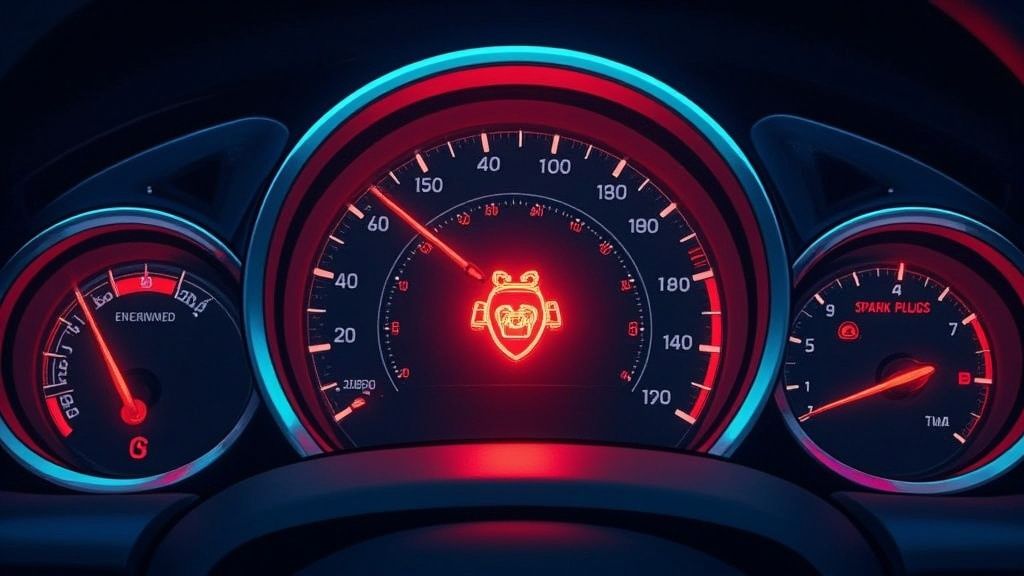
Check Engine Light Meaning: A Complete Guide to Understanding Warning Signals
Understanding the Check Engine Light Essentials
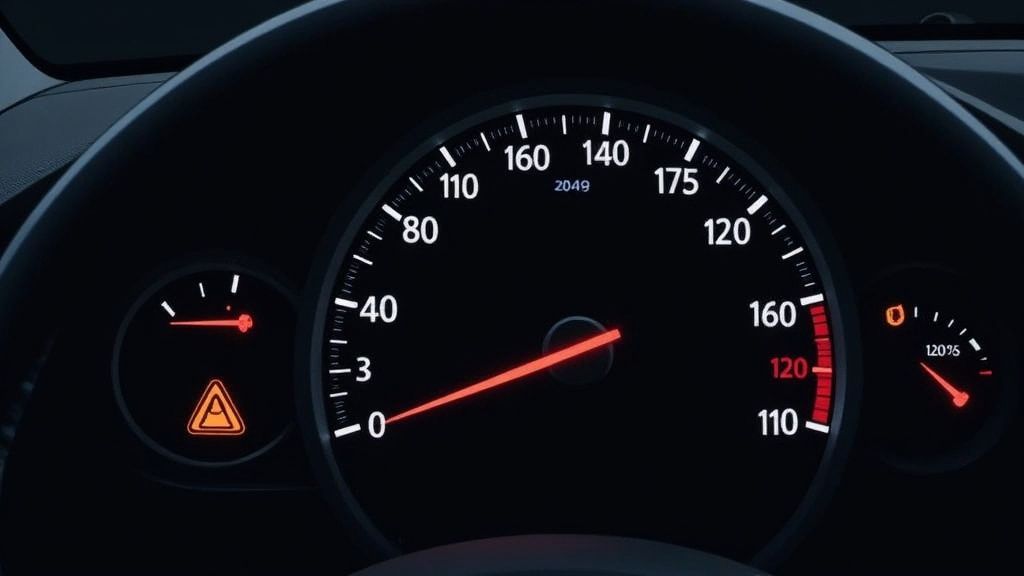
When that amber warning light appears on your dashboard, it’s natural to feel concerned. The check engine light serves as your car’s way of alerting you to potential issues that need attention. Understanding what causes this warning to illuminate is key to addressing any underlying problems.
How the Check Engine Light Works
Your car contains an extensive network of sensors that continuously monitor engine performance. These sensors work like a nervous system, sending data to your vehicle’s main computer. They track everything from fuel mixture to exhaust emissions, ensuring your engine runs properly.
The system uses the On-Board Diagnostics II (OBD-II) protocol, which has been standard in vehicles since 1996. When sensors detect readings outside normal parameters, they generate an OBD-II code and turn on the malfunction indicator lamp (MIL) - the technical name for your check engine light. A steady light typically points to minor issues like a loose gas cap, while a flashing light warns of serious problems that could damage vital components. Learn more about check engine light causes here.
Deciphering the Warning Signals
Your check engine light communicates through distinct patterns. A steady light usually indicates a non-urgent issue that should be checked soon. However, if you see a flashing check engine light, this signals a serious problem requiring immediate attention, such as an engine misfire that could harm your catalytic converter. For more details, see this guide to Understanding Check Engine Light.
Significance of Sensor Integration
Multiple sensors work in harmony to monitor your engine’s health. The oxygen sensor checks exhaust oxygen levels to help maintain the proper fuel mixture. The mass airflow sensor measures incoming air volume, which is critical for optimal combustion. This network of sensors helps pinpoint problems accurately through the OBD-II system. Delaying service when the check engine light appears, whether steady or flashing, often leads to more expensive repairs later. Taking action when this warning appears helps maintain your vehicle’s reliability and performance.
Breaking Down Common Causes and Their Financial Impact
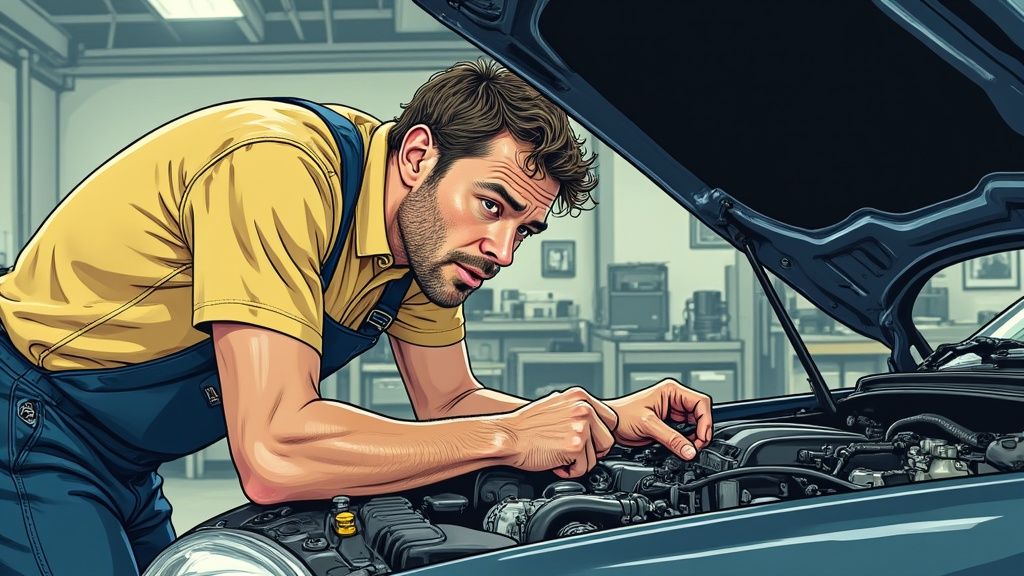
When your check engine light comes on, the first step is knowing what triggered it. But equally important is understanding the potential repair costs. Let’s explore the most frequent issues behind this warning light and what you can expect to pay to fix them.
Common Check Engine Light Culprits and Their Costs
The check engine light can signal problems ranging from minor to major. A loose gas cap might only need tightening at no cost, while a bad catalytic converter could mean $1,000 or more in repairs. Other typical issues include faulty oxygen sensors, worn spark plugs, failing ignition coils, and malfunctioning mass air flow sensors. Learn more about specific repair costs from CarMD’s analysis of check engine light repairs.
The Price Tag of Ignoring the Warning
Delaying repairs can multiply your costs. Small problems often grow into bigger, more expensive ones when left unchecked. For example, a minor vacuum hose leak might cost $20 to fix initially, but if ignored, it could lead to $2,000 or more in engine damage. Quick action on warning lights often means smaller repair bills.
How Vehicle Make and Model Influence Repair Costs
Your car’s make and model significantly impact repair costs. Parts availability and repair complexity vary widely between vehicles. For instance, fixing an oxygen sensor might cost $200 on a domestic sedan but $600 on a luxury import. Age also matters - older vehicles may require special ordering of parts, potentially increasing both cost and repair time.
Budgeting for the Unexpected
Setting aside money monthly for car repairs helps avoid financial stress when problems arise. Consider creating an emergency fund specifically for auto repairs - experts recommend saving $50-100 per month. This preparation ensures you can address check engine light issues promptly, preventing more costly repairs later. Tools like Auto Service Logger can help track your maintenance history and plan for future expenses.
Vehicle Age and Warning Light Patterns
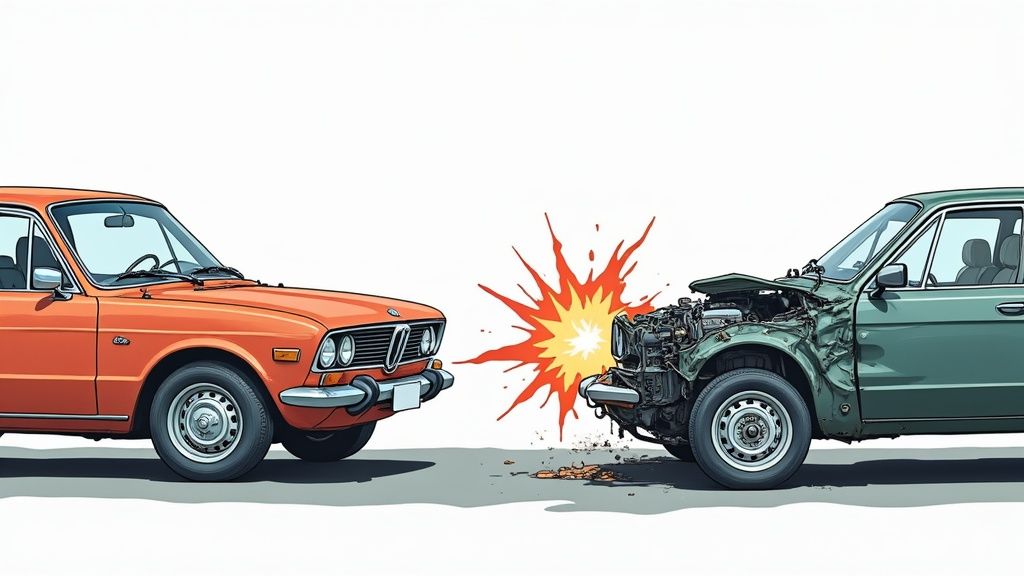
As vehicles get older, they start displaying different patterns of check engine light warnings. Understanding these age-related warning signs helps car owners maintain their vehicles properly and manage repair costs effectively.
The Impact of Age on Check Engine Light Frequency
Modern vehicles under three years old rarely show check engine light issues thanks to precise manufacturing and quality parts. However, regular wear and tear changes this pattern as cars age. According to CarMD’s Vehicle Health Index, newer vehicles make up less than 1% of check engine light repairs, while 2007 models alone account for 9.9% of these issues. This shows how older vehicles need more attention and repairs related to warning lights.
Common Issues in Different Age Brackets
Cars of different ages tend to have specific problems. Newer models might show check engine lights due to sensor issues or computer glitches. Older vehicles often need repairs for worn catalytic converters, failing oxygen sensors, or emissions system problems.
Anticipating Potential Issues Based on Vehicle Age
Knowing what problems to expect based on your car’s age helps you plan ahead. If you own an older car, prepare for potential oxygen sensor replacements or emissions system repairs. This knowledge lets you budget for repairs and fix small issues before they become expensive problems.
Age-Appropriate Maintenance Strategies
Following the right maintenance schedule for your car’s age helps prevent check engine light issues and extends vehicle life. As your car gets older, increase the frequency of checkups and maintenance. Using Auto Service Logger to track maintenance history proves helpful for staying organized and keeping detailed records, which becomes valuable when selling your car.
Smart Prevention Strategies That Save Money
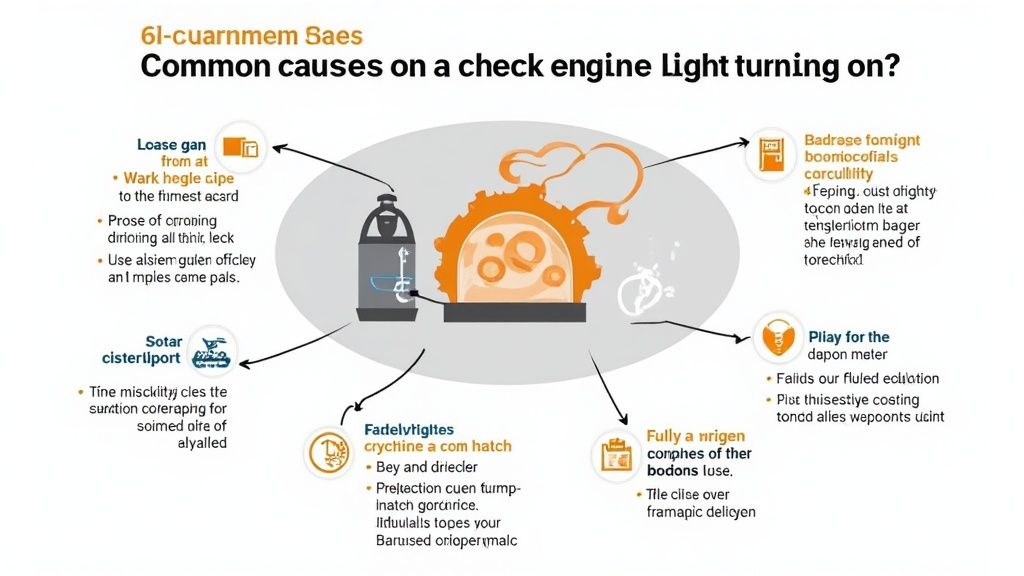
Taking proactive steps to prevent car problems helps you avoid that dreaded check engine light. By staying on top of maintenance and addressing small issues early, you can keep your vehicle running well while protecting your bank account. Here are proven strategies to maintain your car’s health and avoid expensive repairs.
Early Warning Signs: Catching Problems Before They Escalate
Pay close attention to any changes in how your car runs and sounds. Listen for unusual noises, notice if performance declines, or if fuel efficiency drops. Something as minor as hesitation during acceleration or a rough idle could signal a developing issue. Dealing with these warning signs promptly prevents them from becoming major, costly problems.
Maintaining Critical Systems: The Heart of Prevention
Several key systems need regular care to prevent check engine light issues. Keep your engine’s air intake clean with filter changes, maintain proper fuel delivery, and replace spark plugs as recommended. Taking care of these basic maintenance items helps your vehicle’s components last longer and run better.
Regular maintenance plays a vital role in preventing problems. For instance, skipping routine service can lead to failure of expensive parts like the catalytic converter. According to CarMD, catalytic converter repairs are the most common fix, often stemming from neglected maintenance of oxygen sensors or ignition coils. Basic items like loose gas caps and worn spark plugs are easy to address through routine checks. Learn more about check engine light history here. For additional tips, see How to master affordable car repairs.
Cost-Effective Maintenance Schedules: Planning for Success
Create a maintenance schedule based on your vehicle’s specific needs. Check your owner’s manual for recommended service intervals and follow them carefully. Having a plan helps you budget for upcoming maintenance and avoid surprise repairs.
Extending Component Life: Smart Strategies for Long-Term Savings
Good maintenance habits help your car’s parts last longer. Regular oil changes protect the engine from wear. Proper tire inflation and rotation ensure even tread wear and better gas mileage. These simple but important steps add up to major savings over time.
Making Smart Choices: DIY vs. Professional Diagnosis
When your check engine light comes on, you face an important decision - should you try diagnosing the issue yourself or seek professional help? Making the right choice depends on your car knowledge, available tools, and the nature of the potential problem.
DIY Diagnostic Tools and Their Capabilities
OBD-II scanners allow car owners to read the trouble codes from their vehicle’s computer system. While helpful as a starting point, these tools have key limitations. They provide the diagnostic code but may not reveal the root cause. For instance, an emissions-related code could indicate anything from a loose gas cap to a failing catalytic converter.
When Self-Diagnosis Makes Sense
DIY diagnosis works well for basic issues, particularly if you’re experienced with car repairs. Common problems that confident DIYers can handle include loose gas caps, faulty oxygen sensors, or worn spark plugs. Learn more: How to master DIY vs. professional repairs.
Signs You Need a Professional
More complicated issues require expert attention - like transmission problems, engine malfunctions, or complex electrical faults. Attempting these repairs without proper training risks causing additional damage and higher costs. A flashing check engine light signals a serious issue needing immediate professional diagnosis.
Comparing DIY and Professional Costs
While DIY scanning saves on diagnostic fees (typically $50 to $150), misdiagnosing the problem can lead to unnecessary parts replacement and wasted effort. Professional mechanics have specialized tools, training and expertise to accurately identify and fix issues.
Working With Your Mechanic
Clear communication helps achieve the best repair outcome. Give your mechanic detailed information about when the light appeared and any unusual symptoms you’ve noticed. If you used an OBD-II scanner, share the codes you found. Ask questions to fully understand the recommended repairs before approving work. This open dialogue builds trust and helps ensure quality service.
Taking Immediate Action: Your Response Plan
When your check engine light comes on, staying calm and having a clear plan is key. With the right response strategy, you can save time and money while preventing more serious issues. Let’s look at the essential steps to take.
Assessing the Severity: Steady vs. Flashing
The first step is understanding what type of warning you’re seeing. A steady check engine light typically means a maintenance issue that should be checked soon but isn’t an emergency. However, a flashing check engine light signals a serious problem requiring immediate action. This flashing light often indicates engine misfiring or other critical issues that could cause severe damage if ignored.
Documenting Symptoms: Gathering Crucial Clues
Pay attention to any unusual signs accompanying the check engine light. Make note of things like rough idling, strange noises, odd smells, or decreased gas mileage. These details help mechanics diagnose problems more efficiently. For instance, a sulfur-like smell paired with the warning light could point to catalytic converter problems.
The Drive or Tow Decision: Making Informed Choices
With a steady light, you can usually safely drive to a repair shop or auto parts store. However, when the light is flashing, having your car towed is the safest option. While towing costs money upfront, it can prevent much more expensive repairs that could result from continued driving.
Gathering Diagnostic Information: Empowering Your Mechanic
Consider using an OBD-II scanner before visiting a mechanic. These simple diagnostic tools connect to your car’s computer to read error codes. Having these codes ready gives mechanics valuable insight into potential problems before they begin their inspection.
Emergency Response Protocols: Handling Critical Situations
If you notice serious symptoms like power loss, smoke, or concerning noises along with the check engine light, pull over as soon as it’s safe. Turn off the engine and call for a tow truck. Quick action in these situations can prevent major engine damage.
Want to stay on top of your car’s maintenance and be ready for check engine lights? Auto Service Logger helps you track all your vehicle’s service records in one place. Having this information organized and accessible makes dealing with car issues much easier. Visit Auto Service Logger to get started!